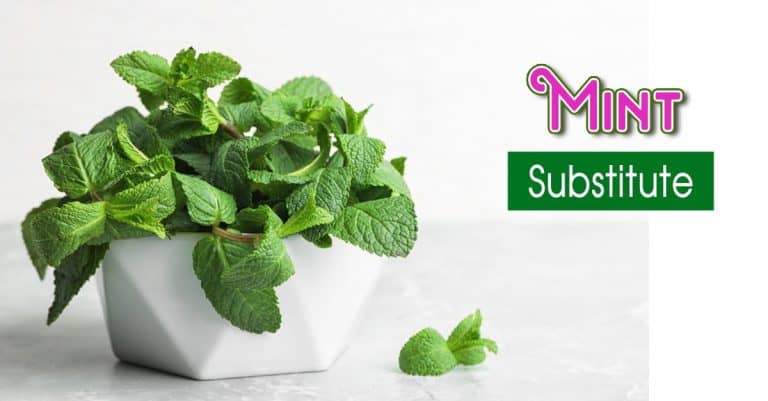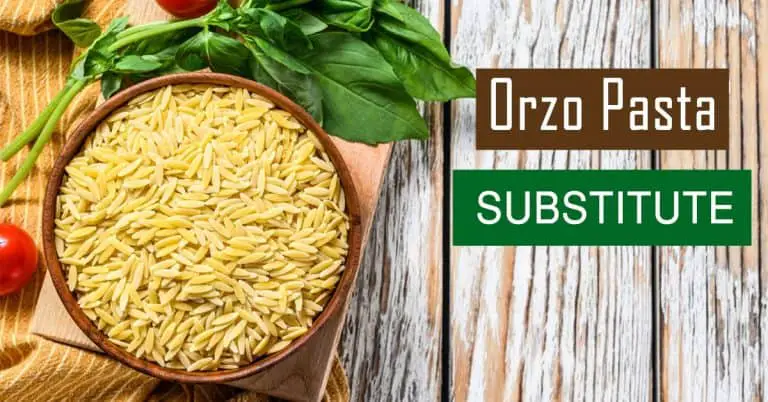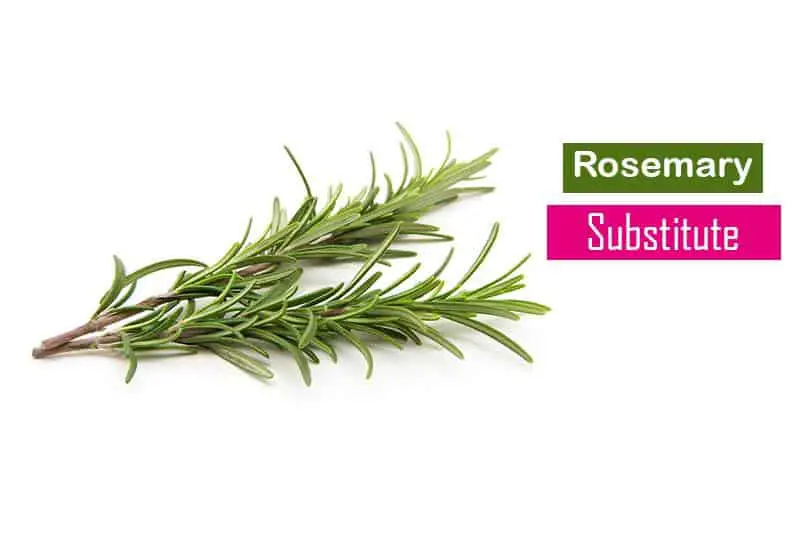
Why should you know some ingredients to substitute for rosemary?
Rosemary is an all-around cooking assistant, going well with most if not all protein and veggies. But its versatility is also its drawback. You’ll soon run out of rosemary, and if you don’t know its alternative, things can go wrong.
Here are 14 handy substitutions for you.
14 Ideas To Substitute For Rosemary
1. Thyme (Fresh or Dried)

If rosemary is the king herb in the culinary kingdom, thyme is the queen. They pop up in many recipes and can be used interchangeably.
Though thyme’s flavor is not as robust as rosemary, it does satisfy you with a slightly peppery note and a herbal kick reminiscent of floral, wood, and grass.
It delights your taste buds and refreshes your mind with a breath of nature. We’re pretty sure that the little difference between the two is nothing compared to the experience it brings.
But the best part is yet to come. Have you ever heard of lemon thyme? This plant brings out the typical citrus fragrance, making it closer to the fresh rosemary taste. You can use fresh thyme for dressing or seasoning in soups, stews, red meat, or chicken dishes.
Thyme is chock-full of vitamin C to boost your immune system and fight off the common cold. You can also benefit from its included manganese for curbing blood clotting and supporting bone development, as well as potassium for healthy cells.
2. Sage (Fresh or Dried)

Sage may fail in fulfilling the citric note but come out on top when replacing the pine-like hint of rosemary. These silver-green leaves also bring out an earthy and peppery touch, recalling eucalyptus and mint.
You can use fresh sage in soups, but it blossoms in a cheese- or butter-based sauce to spice up your dish. If you are about to make stuffed chicken, sage leaves are a must.
One thing to keep in mind is this plant’s scent is far stronger than rosemary. You will want to use half as much sage as rosemary each time.
Sage doubles as a medicinal herb, offering numerous health benefits. Only 0.7 grams of its leaves (about 1 teaspoon) can meet up to 10% of daily vitamin K intake. It is also loaded with various antioxidants, improving brain function and reducing cancer risk.
3. Marjoram (Fresh or Dried)
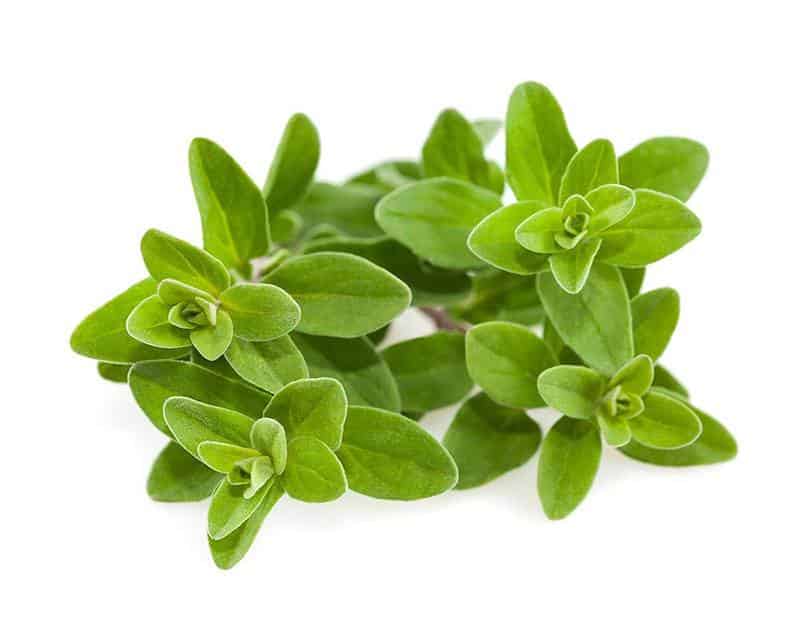
We call marjoram the charming princess, as it is a cross between thyme and rosemary in taste. Marjoram resembles the piney and citrus flavor of its father – King rosemary – while still delicate with a woody and floral touch of its mother – Queen thyme.
You can use this spice in stews, soups, sauces, meat recipes, and garnishing. However, you can’t easily get your hand on this special plant. If this is the case, dried marjoram also does the trick.
People have utilized marjoram in many traditional remedies. Compounds derived from this herb boast antioxidant, anti-inflammatory, and antimicrobial properties. Keep in mind that these hairy leaves may irritate sensitive skin.
4. Tarragon
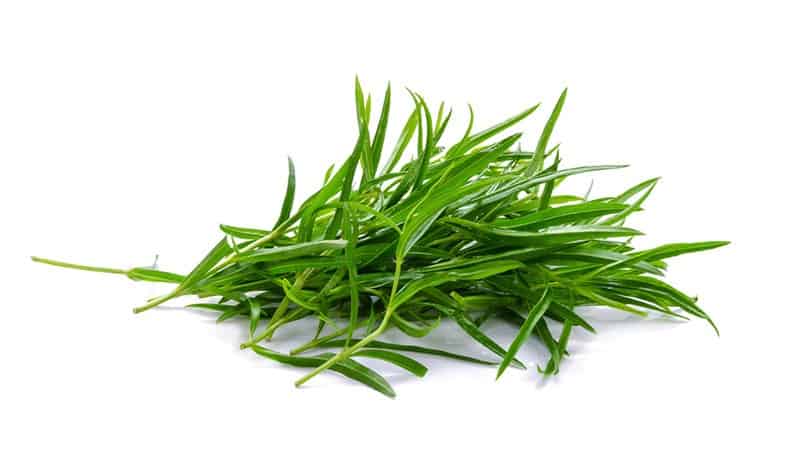
Tarragon is not a crowd-pleaser since it comes with a strong and complex flavor profile. Simply put, it is a blend of anise, licorice, lemon, and mint. Some with well-trained palates even trace a hint of vanilla.
Anyway, you can spot a herbal and citrus note in that blend, so tarragon can appear in your checklist of rosemary substitute. That said, tarragon’s taste is lighter and more tolerable than rosemary. A 2:1 proportion is recommended for rosemary and tarragon, respectively.
This robust herb may not be suitable for dressing but a shining star for seasoning. Tarragon works best with salmon, tuna, chicken, eggs, and some vegetables like asparagus and carrots. You can toss it in soups, pesto, sauces or stuff them in the cavity of chicken before roasting.
This flavor-bomb herb has the potential to reduce pain, blood sugar levels, and inflammation, plus improve your appetite, sleep, and heart health.
5. Savory
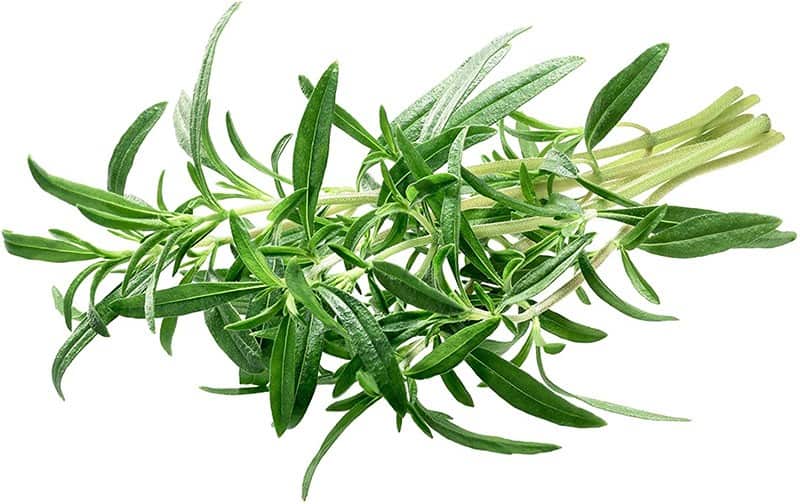
Before using this plant to substitute for rosemary, please remember that there are two kinds of savory: winter and summer. You won’t want to come near to the winter savory since it has almost nothing in common with rosemary and is rather bitter.
Meanwhile, summer savory is a decent alternative with a peppery hint and much sweeter than its sibling. Pork, poultry, and beans are three popular pairings of this spice. Be it stews, soups, stuffing, or sauces; summer savory can please you.
Its tender shoots and leaves are a rich source of iron, calcium, potassium, magnesium, selenium, and zinc. People usually take this fresh herb to alleviate sore throats, coughs, and several intestinal disorders like gas, indigestion, cramps, nausea, diarrhea, or loss of appetite.
6. Oregano

Oregano falls under the same umbrella with rosemary, so it more or less imitates the minty, peppery taste and woody aroma of rosemary. If the recipe calls for fresh rosemary, you can trust these herbs.
The best thing about this plant is that its dressing use is comparable to rosemary. You can use oregano leaves to jazz up pasta or pizza sauces or dress up roasted potato dishes.
This herb contains a huge amount of vitamin C and A, which benefits your eye health and boosts the overall energy. Surprisingly, you can also utilize oregano to treat acne and dandruff and soothe insect bites.
7. Basil

Like oregano and thyme, basil also comes from the family of Lamiaceae. It is no stranger to any home cook, so you can rest assured about its availability. What about taste? Luckily, this herb has exactly what you need to replace rosemary.
Basil not only resembles the peppery and fresh taste of rosemary but also serves you an extra sweet aftertaste. Obviously, this herb is more pleasant than the original ingredient.
You can toss it in pasta and pizza for a dressing effect or chop it in soups and salads. It welcomes zucchini, tomatoes, eggplant, and other eggplant substitutes.
This small herb can lower your blood pressure by blocking calcium channels. A significant amount of magnesium in basil also relaxes your blood vessels and muscles, hence improving blood flow.
8. Peppermint

When it comes to the refresh and herbal breath that a herb can bring, peppermint takes the crown. So if you are looking for a rosemary substitute for garnishing, this herb is the way to go.
You can dress up your salads, sauces, or other side dishes with some sprigs of mint. It is a fresh addition to help you blow off steam and receive a burst of good mood.
Only 14 grams of peppermint can meet up to 12% of the recommended daily intake of vitamin A. This nutrient does wonders for your eye and kidney as well. This herb is also a reliable remedy for indigestion and stomach discomfort.
9. Bay Leaf

With a minty flavor and a peppery scent, bay leaves are no doubt distinguishable even in a pot of many herbs like Goulash, making them one of the best substitutes for rosemary.
You can also notice a bitter trace from these leaves. That’s why they are usually cured with sunlight exposure to reduce the bitterness before standing in your kitchen cabinet.
Bay leaves work best in lamb, goat, mutton, or poultry recipes. You can also brighten your stews, curries, soups, or casserole with this herb.
These leaves are packed with vitamin C, vitamin A, potassium, iron, magnesium, and calcium to promote your general health. They have also been proven to aid in migraine treatment. What’s more, this plant offers enzymes to break down proteins faster, soothing indigestion.
10. Chives

Chives with small and thin green leaves can add an oniony taste to your recipe. So, what is the common point with rosemary? We’re afraid that they don’t resemble the original herb that much, but the visual appeal and refreshing taste of chives can somehow satisfy you.
You can top them on soups, salads, stir-fries, dips, or any main course to jazz up the dish. Otherwise, mix them with the seasoning for pork, fish, and seafood. They will blend well with other ingredients and stand out with a herby addition.
Chives are full of vitamin K, which is essential for healthy bones and preventing blood clotting. Not to mention, choline in chives supports good memory and brings you a sound sleep.
11. Dill
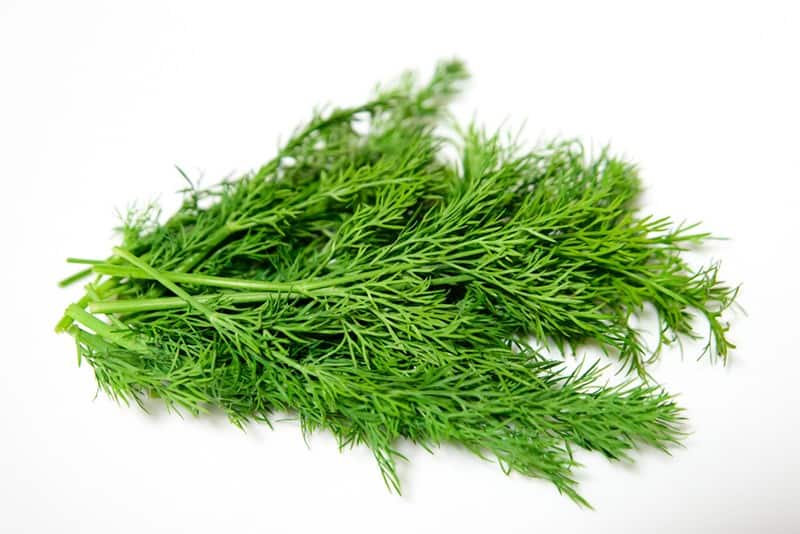
Dill doesn’t come with a peppery touch like rosemary, but it can satisfy you with its citric and grassy tone. Though rosemary, with its intense flavor, is more overpowered than dill, the substitute still brings out a comparable outcome.
Like rosemary, you are free to use it as a dressing for salads, soups, sauces, or seafood dishes. It’s worth noting that dill’s flavor vanishes rapidly when cooked for a long time, so you’d better add this herb after finishing.
People usually use dill for appetite loss treatment. Dill is also an abundant source of vitamin C to boost your immune system and resist infection. That said, too much dill consumption can make your skin more sensitive.
12. Parsley

Parsley is the perfect choice for garnishing in place of rosemary. It mimics the peppery trace of rosemary with an added earhiness. But you will feel little change in the original recipe for its lack of citric hint.
You can use it as a garnish on pasta, soups, and stir-fries or mix it with salad for a punch of flavor. For seasoning, this herb works well with meatballs, salsas, fishcakes, and marinades.
Don’t overrate this tiny dressing as it is a vitamin K superstar. This nutrient will promote the mineral density in your bones, thus improving bone health and growth. Parsley also comes with an anti-inflammatory to keep your kidneys in good condition.
13. Caraway Seed
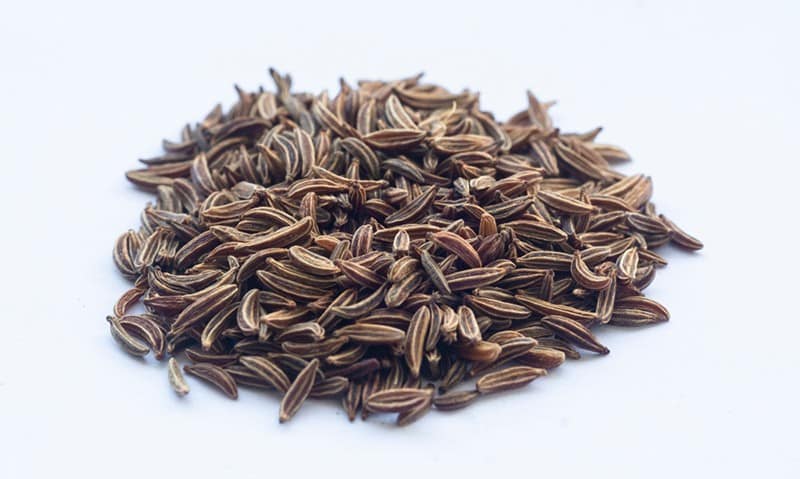
Caraway seeds offer the earthy flavor and herby scent that you can also find in fresh rosemary. You can’t expect a strong aroma like rosemary from these seeds, but their scent is incredibly long-lasting.
So, even when you happen to add them too soon or leave the dish cooked for too long, your desired flavor remains. However, if you are searching for a garnishing replacement, these seeds are not a wise choice.
Rather than that, you will see how well this spice works in flavoring. You can use dried seeds or ground coriander to brighten your dishes like baked goods, desserts, casseroles, salads, curries, sausages, and vegetables.
Caraway is believed to have positive effects on some digestive problems, such as bloating, loss of appetite, heartburn, gas, and spasms of the intestines and stomach. Also, its high-fiber index will aid in cholesterol level reduction and blood sugar control.
14. Italian Seasoning (Best For Dried Rosemary Substitute)
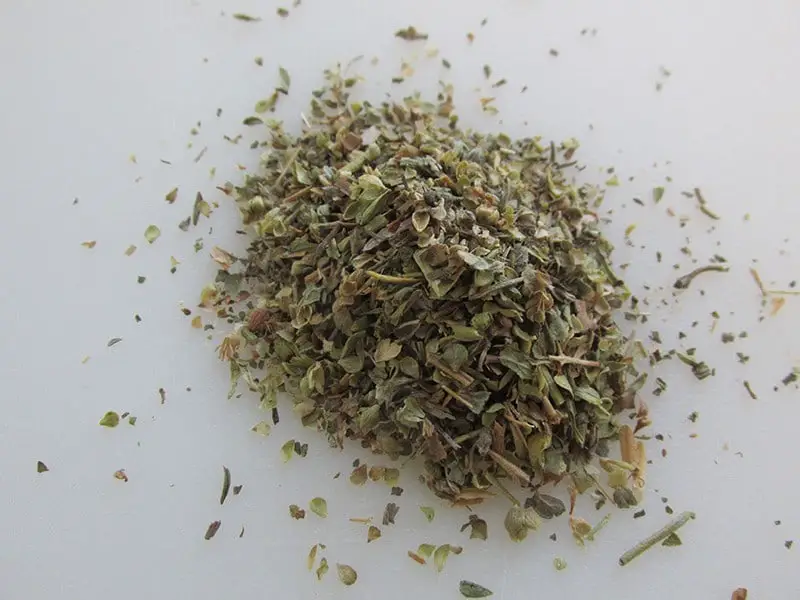
Italian seasoning is a mixture of Italian-inspired dried herbs, including marjoram, rosemary, basil, oregano, thyme, to name a few. As you can see, rosemary is one of its main ingredients, so using this spice blend can give you a hint of rosemary.
Due to its complex profile, Italian seasoning might overwhelm other ingredients and somehow alter your final dish. Also, this dried spice can’t replace fresh rosemary. So, you should only consider this pick as a last resort.
You can use it in a wide range of dishes, from spaghetti sauces, pasta, chicken, meatballs, seafood to fish. But we don’t recommend fresh salads and roasted meat recipes.
As a blend, this spice offers you many vitamins and minerals from various herbs. That said, they are dried herbs, so their nutrition may be diminished.
Frequently Asked Questions
1. What Are The Best Rosemary Substitutes For Specific Dishes?
One substitute may shine in this dish but fail in others. So, consider our recommendations to perfect your substitution.
| Recipes | Substitutes |
| Lamb, goat, mutton | Blend of thyme, peppermint, and bay leaves |
| Beef, pork, egg | Sage, tarragon |
| Chicken, turkey, poultry | Thyme, sage, savory, parsley, tarragon |
| Fish | Chives, dill, parsley |
| Seafood | Sage |
| Sausage | Caraway seeds, sage |
| Mushrooms | Marjoram, basil, tarragon, oregano |
2. Can You Use Lavender As A Fresh Rosemary Substitute?
Yes, you can. Interestingly enough, lavender and rosemary come from the same family – Lavandula. You may not be the only one confused about the two for their similar appearance.
But we don’t include it on our list for a reason. Despite the same root and look, the two ingredients’ flavors are a different story.
Rosemary is much more robust, citric, and peppery in taste, and stronger in scent. Meanwhile, lavender’s taste profile is a cross between floral and sweet touch with a bitter aftertaste.
So, this rosemary substitute is somewhat risky. If you do prefer the sweet lavender to the peppery and lemon-pine rosemary, you’ll want to use more lavender.
3. What Is The Difference Between Thyme And Rosemary?
Though you can switch between thyme and rosemary, they differ in appearance and taste.
You can easily tell them apart thanks to their distinct look. Thyme boasts small and rounded leaves, giving you a soft hand-feel. On the other hand, rosemary stands out with stiff and needle-like leaves.
In terms of taste, they share the floral, woody, and peppery touch. But fresh rosemary overpowers with a more astringent and pungent flavor than thyme.
4. Can You Grow Rosemary At Home?
Yes, of course. It’s never been easier to own a free rosemary supplier at home! Here are 3 simple steps for your first crop.
Step 1: Growing
It’s better and quicker to start with rosemary cuttings than seeds.
Cut off about 4 inches of the plant and strip off the leaves at the 1-inch bottom section. Propagate those cuttings in small pots with 2/3 coarse sand and 2/3 peat moss above. After about 3 weeks, when the roots have formed, place the pots outside for full sunlight.
Step 2: Caring
Rosemary is super easy-going. You don’t need to water or fertilize them frequently. They love to get most of their water from rain.
When the temperature falls below 0°F, bring them indoors. Prune some branches if you notice the bush is too large.
Step 3: Harvesting
The good thing is, rosemary is evergreen. So, you can pick some sprigs when needed, and the plant will continue happily growing for year-round supply.
Store fresh rosemary in a dry and cool place, best in the freezer.
Conclusion
Rosemary comes with a complex flavor that hardly anything can stand in for it. But we believe our 14 suggestions above somehow live up to your expectation.
Honestly, there is no specific cooking recipe, so let your creativity flow and feel free to try something new. Maybe you can find a substitute for rosemary that suits you most someday.
Related Posts:
- 13 Fennel Seed Substitute Ideas – Go For Seeds Or Liquid?
- Substitute For Coriander – 16 Options To Spice Up Your Dish
- Mint Substitutes: 12 Best-Recommended Options
- What Are The Best Scallion Substitutes? How To Cook Them Right?
- Substitute For Green Onion: Top 12 Options You Should Try




